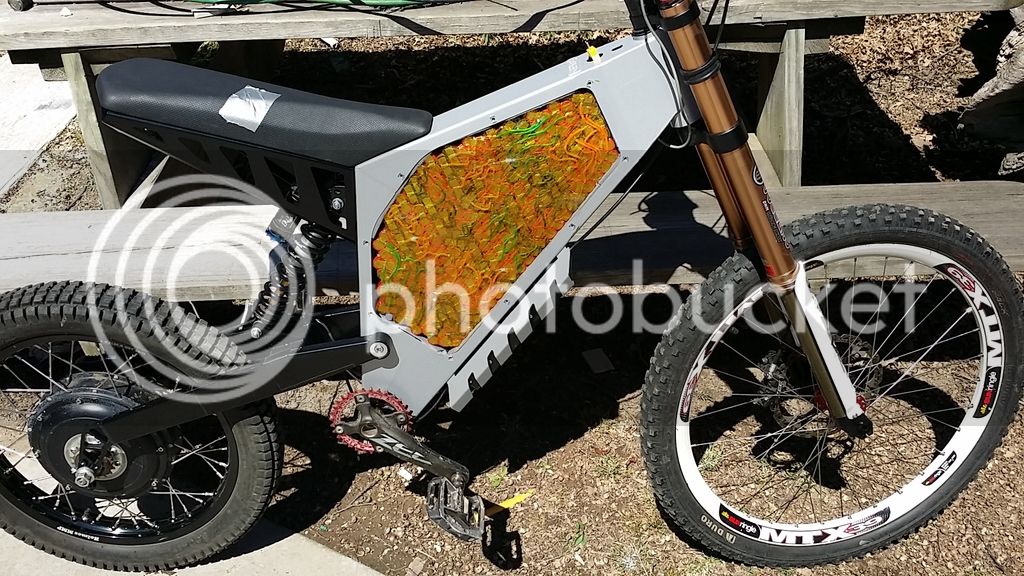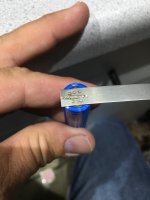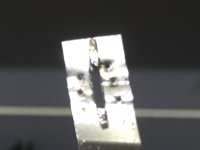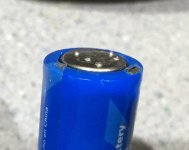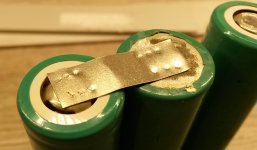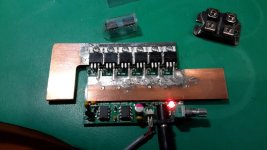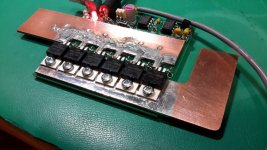bobfandango
10 mW
- Joined
- Jan 24, 2016
- Messages
- 31
I was fortunate to receive one of the last welders before riba went on hiatus. And it seems that perhaps folks are having varying degrees of success with .3mm nickel, so thought I'd report my results as well.
I have an 80 amp-hour group 24M deep cycle battery. Because I knew I wanted to go with .3mm nickel for at least my series connections, I went ahead and built the diode mod with a couple of IRFB7430PBF-ND from Digikey. I fully charged the battery, and gave things a whirl with various thicknesses of material with some dead C batteries. Everything up to .3 welds effortlessly and completely. Even at full power (longest pulse), however, my setup doesn't weld .3 reliably.
But that said, I was trying to weld a single piece of nickel with no slot i.e. both electrodes on the same solid strip of nickel. But per some of the posts I read here, I tried welding with the electrodes on two separate pieces so the current would have to go down and through the battery and voila, excellent welds. Removing the nickel requires pliers and results in complete perforation at the weld site. I'm going to experiment with creating strips with slots using a dremel to see how that compares.
At any rate, I can confirm that a single somewhat larger battery will suffice for welding .3mm if you can force the current down through the battery instead of shorting across the strip.
I have an 80 amp-hour group 24M deep cycle battery. Because I knew I wanted to go with .3mm nickel for at least my series connections, I went ahead and built the diode mod with a couple of IRFB7430PBF-ND from Digikey. I fully charged the battery, and gave things a whirl with various thicknesses of material with some dead C batteries. Everything up to .3 welds effortlessly and completely. Even at full power (longest pulse), however, my setup doesn't weld .3 reliably.
But that said, I was trying to weld a single piece of nickel with no slot i.e. both electrodes on the same solid strip of nickel. But per some of the posts I read here, I tried welding with the electrodes on two separate pieces so the current would have to go down and through the battery and voila, excellent welds. Removing the nickel requires pliers and results in complete perforation at the weld site. I'm going to experiment with creating strips with slots using a dremel to see how that compares.
At any rate, I can confirm that a single somewhat larger battery will suffice for welding .3mm if you can force the current down through the battery instead of shorting across the strip.


